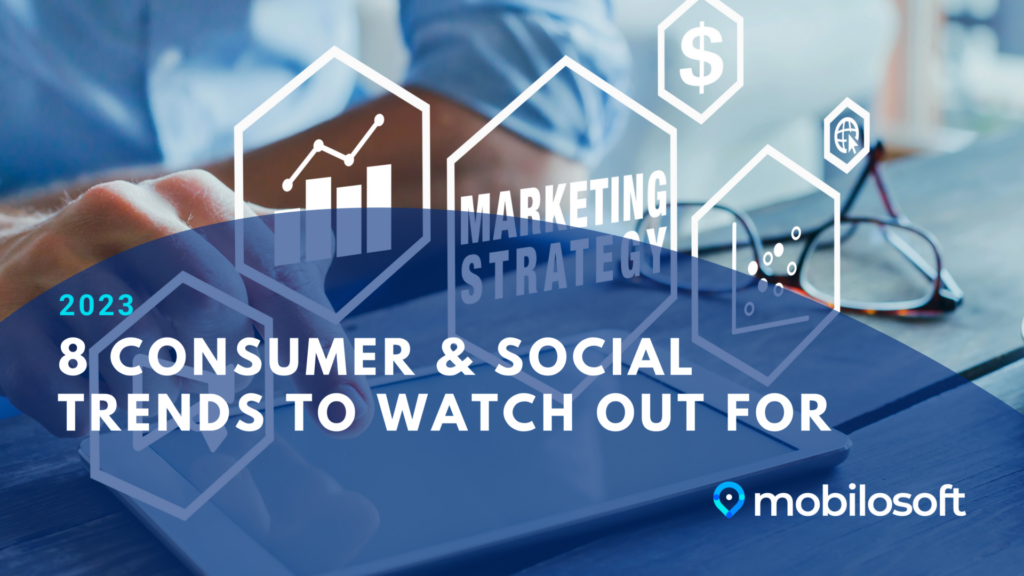- Consumers seek inspiration online
- Consumers shopping habits are local
- Shopping is increasingly omnichannel
- Consumers are looking for added value
- Social Selling is here to stay
- Short videos are more popular than ever
- Micro-influencers, a marketing strategy to invest in
- The position zero, the holy grail of local SEO
2022 consumer trends that will impact consumer shopping habits
- Consumers seek inspiration online:
According to a recent Google study, more than 48% of consumers around the world say they look online for inspiration when shopping. This trend is confirmed when making a purchase decision: 91% of consumers do an online search before going to the store (Ifop, 2020).
Our advice: Develop the online visibility of your establishments through the creation of local pages on key media (Google, Facebook/Instagram, Store locator,…). Develop a local content strategy, specific to the news of your different points of sale, in order to attract customers locally.
- Consumers shopping habits are local:
Queries such as “open now nearby” have jumped more than 400% in one year worldwide.
These numbers reflect a growing trend to look online before going anywhere, and indicate that when searching for businesses, consumers are increasingly looking for immediate solutions. For example, in the early evening, a person is more likely to search on Google (Maps) for nearby restaurants.
Our advice: Invest in the natural referencing of your points of sale on the different GPS outlets (Google Maps, Apple Maps, Bing Maps, Waze, …)
- Shopping is increasingly omnichannel:
Who today uses only one information channel? Today, beyond the traditional channels (TV, radio, press,…), brands are in contact with consumers through multiple digital channels:- Website
- Social networks (Facebook, Instagram, TikTok, Pinterest,…)
- Search engines (Google, Bing, …)
- E-commerce platforms (Amazon, Bol, …)
- Apps
- Newsletters and emailing
- …
Marketing strategies (online and offline) must be designed as a fluid experience through these different channels, and above all be adapted to them: each platform and media has its own codes, and you don’t communicate in the same way depending on the age of the audience and the formats supported.
Our advice: take the time to design omnichannel communication strategies, while guaranteeing the respect of your brand image from a local point of view.
- Consumers are looking for added value:
In a climate of economic uncertainty with post-covid inflation, consumers are waiting for added value, in terms of company standards (positioning, inclusiveness, ecological commitment, etc.) but also and especially in terms of direct added value for them: offers and promotions.
According to a study on the consumption trends of the French, 52% of them see their non-food budget stagnating and 22% intend to decrease their non-food spending.
Our advice: amplify the actions and promotions of your points of sale via various channels (Facebook, Google, newsletter,…)
Social Media & Google
- Social Selling is here to stay
First of all, what is social selling?
Social selling is promoting and selling products and services via social networks like Facebook, Instagram, or Pinterest.
According to an eMarketer study on the number of consumers who bought through social networks, there is a +10% annual increase.
Why?
The social commercial allows a “frictionless” buying experience: on a social network consumers see a product that interests them, they will click, be redirected to a merchant site and if they want, proceed to the purchase and is delivered (if everything goes well, and there are no bugs!).
Example of a social selling:
Instagram Shopping: allows you to place product tags on post images, videos/real life and in story.
Facebook Shops: this is a new interface, which allows users to discover brands and buy their products in the Facebook app.
- Short videos are more popular than ever
Do you know the average attention span of a person?
According to recent studies, it is progressively decreasing and has recently reached 8 seconds on average. This among other things explains the success of platforms offering short video formats, like TikTok or Instagram.
Instagram has nearly 1.4 billion users worldwide, TikTok follows with 1.02 billion. This makes them extremely popular platforms and focused around short videos (or Reels on Instagram).
TikTok offers formats from 3 to 60 sec (from the app) and also offers recently “long” formats from 3 to 10 mins. Instagram offers a Reels format of 90 seconds maximum, but also videos that can go from 3 seconds to 10 minutes.
Why use these formats?
These formats (both on TikTok and Instagram) allow for an organic reach that can be exponential, depending on user interactions (number of views, clicks, likes, comments, shares,…).
In addition, these platforms automatically present in the feed content similar to what the user likes. This means that the videos are shown to an audience already qualified by their interest in similar topics, and who will be more likely to react to them.
Videos under 15 seconds already account for 45% of videos posted to the image stream.
Guillaume Thévenin, head of content creator partnerships at Instagram for Southern Europe, via
France Inter
- Micro-influencers, a marketing strategy to invest in
Micro-influencers (this includes influencers with an audience between 1000 and 100,000 people, depending on the niche) have on average a (much) higher engagement rate than influencers with larger audiences. We’re talking about an audience engagement rate of up to 20% (that’s a lot!).
Why do micro-influencers have such high engagement rates? It’s very simple:- Their audience is smaller, and therefore more targeted around a center of interest, a niche
- They have an easier time maintaining the contact (messages, comments,…) with their followers
- They appear to be more authentic, and therefore more trustworth
Moreover, a campaign or a product placement will be less expensive with a micro-influencer. This allows companies with a smaller budget to diversify their digital acquisition strategies.
- The position zero, the holy grail of local SEO
What is the position zero?
The position zero corresponds, in Google search results, to any information above the first position in natural results (SEO) or “blue links”, except Adwords links.
SEO Definitions, 2018
In short, it is the immediate response offered by Google to the search terms used. The goal is to directly offer the Internet user an answer, via knowledge graph, featured snippets (optimized extracts from web pages), and structured data.
In the case of physical points of sale, one of the best ways to achieve this is to have complete and updated Google business profile page, with store informations (description, services, opening hours, products,…) and to answer to reviews, in order to incite the user to click (and potentially to visit).
Why do these actions?
Because Google takes into account indirect searches (search for products or services, without mentioning a brand), Google highlights product descriptions as well as customer reviews (and answers).
Conclusion
The consumer and social media trends of 2022 (and 2023 predictions) are centered on consumer habits: a majority of Internet users look for inspiration online before making a purchase, use their smartphone to search for businesses/products, are looking for added value (promotions and ecology) and use multiple channels (social networks, search engines, GPS, TV, radio,…).
Preparing your 2023 local marketing strategy keep in mind to use an omnichannel approach, coordinated between national and local, in order to highlight these news and generate online and offline traffic.
If you want to be kept up to date with the latest trends in local digital marketing,




